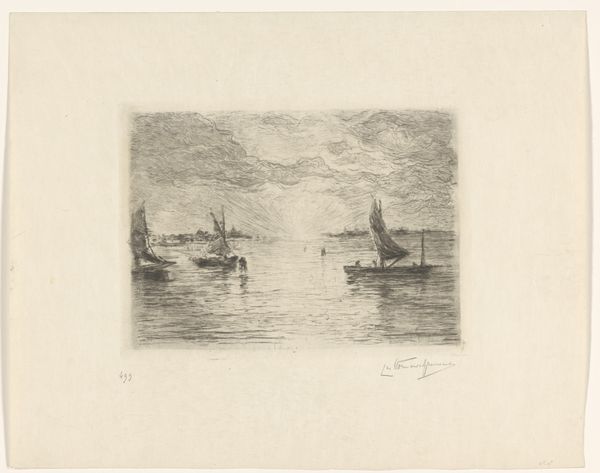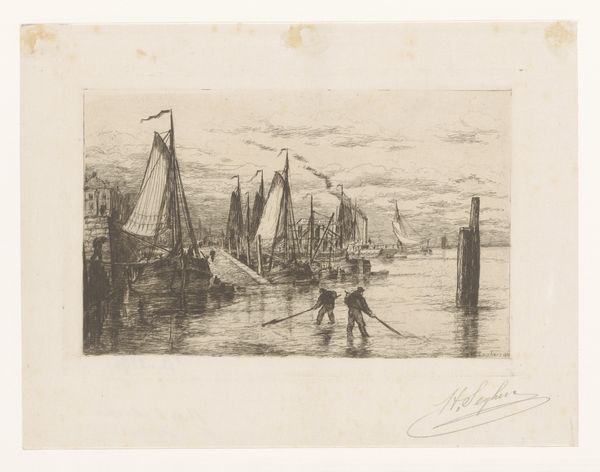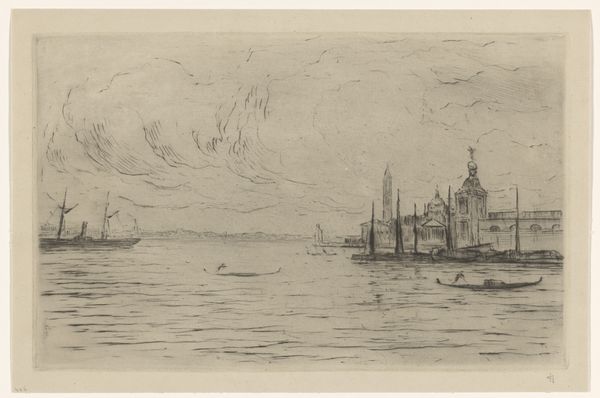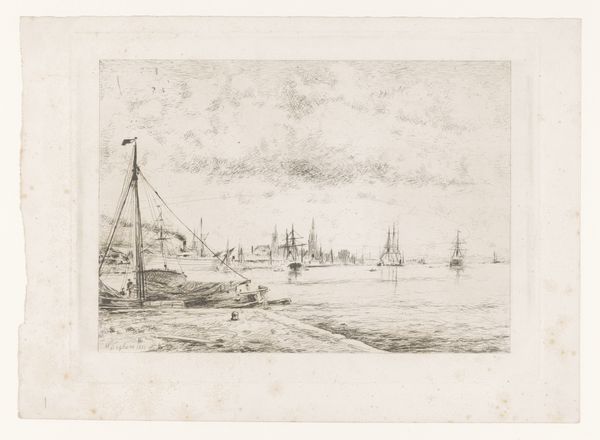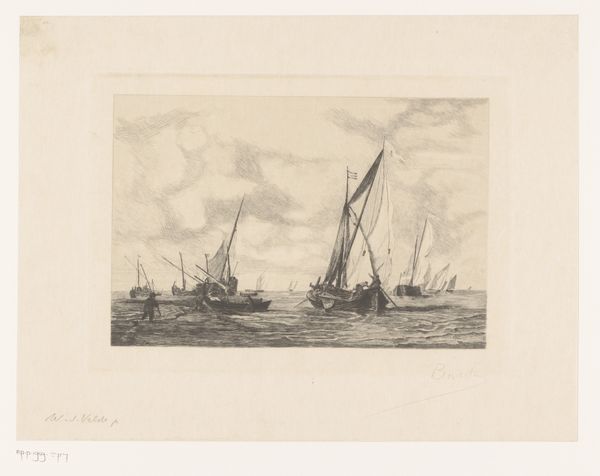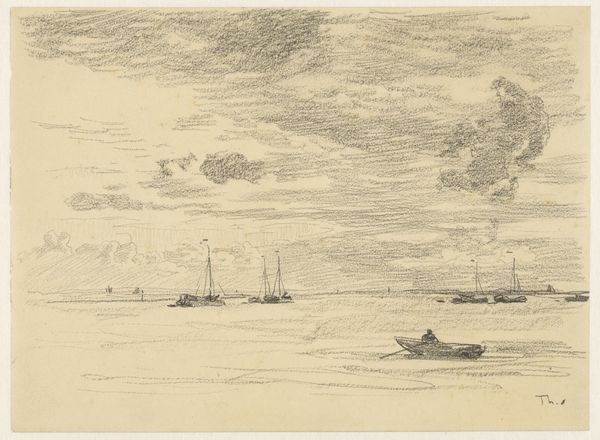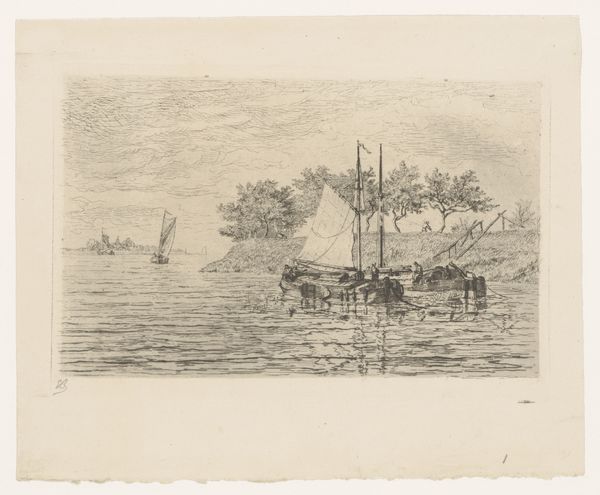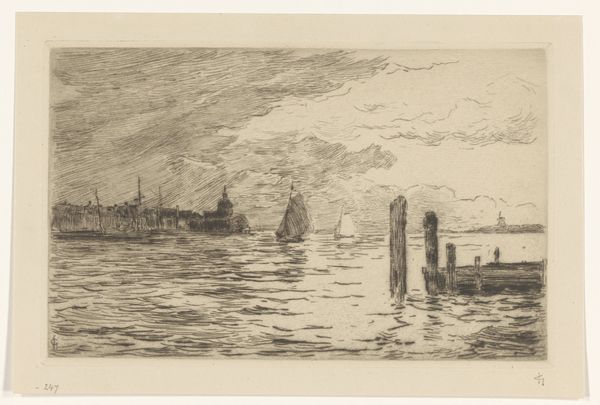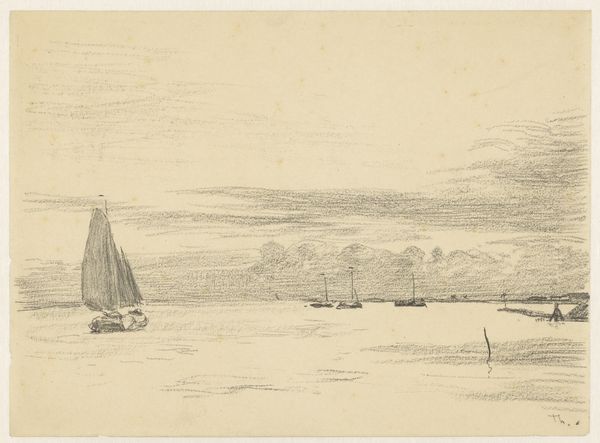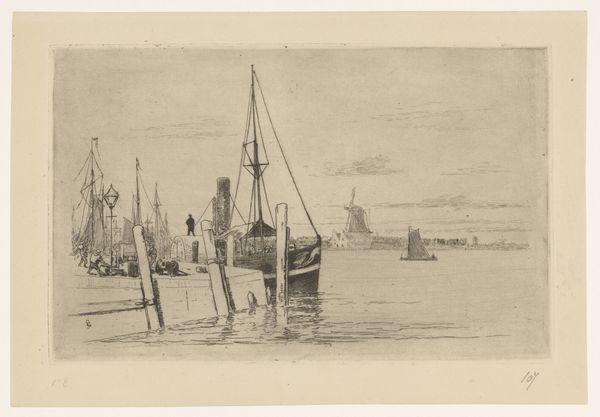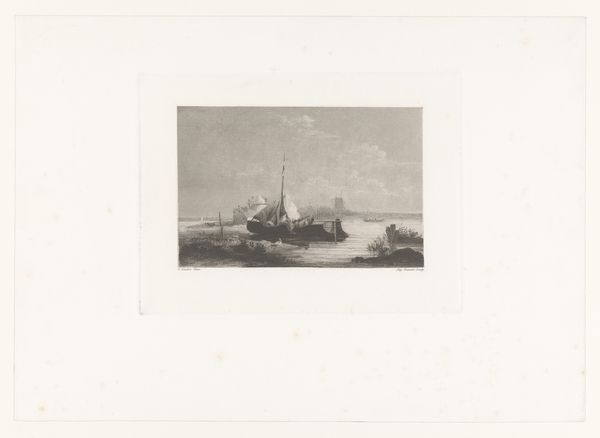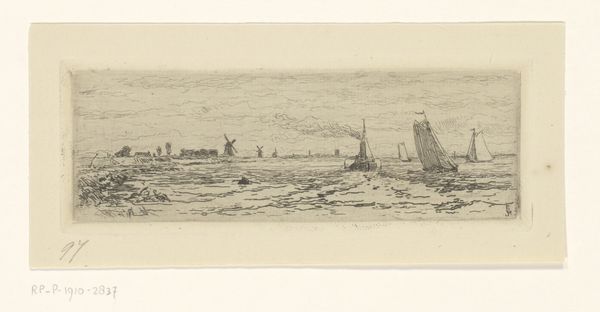
drawing, print, paper, ink
#
drawing
# print
#
landscape
#
paper
#
ink
#
realism
Dimensions: height 164 mm, width 210 mm
Copyright: Rijks Museum: Open Domain
Editor: This is "Kade met pier in het water," a print from 1842 by Jacques Van Gingelen. It depicts a waterfront scene with boats, and it’s created using ink on paper. The level of detail achieved with such simple materials is striking. How would you interpret the artistic choices within its historical context? Curator: Considering it’s 1842, let’s think about production and labor. Look at the printmaking process: a skilled artisan meticulously etching or engraving to reproduce an image multiple times. It democratizes art in a way – allows wider distribution. This also connects with emerging industrial capabilities of the time. Were prints considered “art” in the same vein as painting, or was it perceived differently given its method of creation? Editor: That's an interesting point. I hadn't considered the democratization aspect of printmaking in that era. Do you think that affects the perception of value then? Curator: Absolutely! This brings up questions about the economic system that art inhabits. Mass production potentially diminishes aura compared to unique artwork. Consider the implications of this shift: how materials shape value? Editor: So, it's not just about the scene depicted, but the socio-economic factors surrounding the materials and their processing. What's captured in print matters as much as who could gain access to it and how? Curator: Precisely. By studying it's materials we can address the broader social implications of labor, reproducibility, and the evolving definition of art itself in a period of rapid industrial transformation. Editor: I see. This definitely provides a fresh perspective when observing art. Now I’m much more attentive to materials and related processes.
Comments
No comments
Be the first to comment and join the conversation on the ultimate creative platform.
